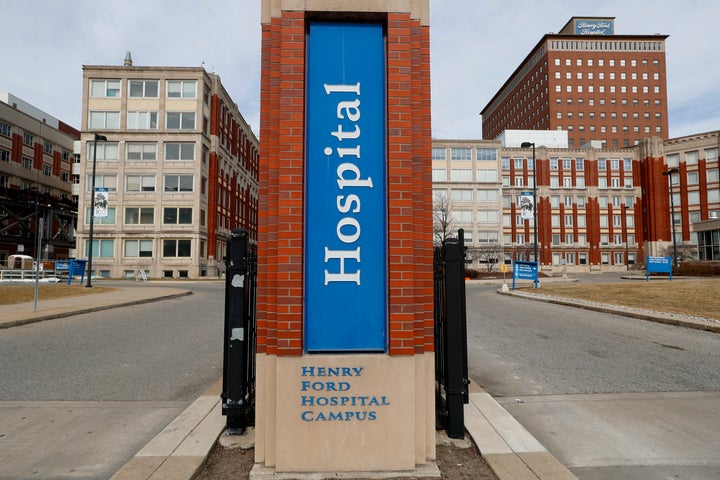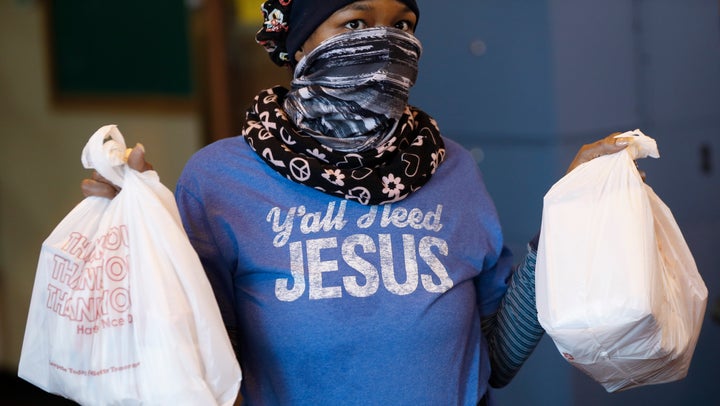
DETROIT ― With about one-third of all of its residents and nearly half of its children living in poverty, Detroit ranks as the nation’s poorest big city. It’s also an emerging hotspot for COVID-19 cases, with 1,075 as of Friday afternoon.
That’s about 15 cases for every 10,000 residents in the city of nearly 700,000 ― a city where the average rate of chronic medical conditions such as diabetes, obesity, hypertension and asthma far exceed those of the state of Michigan and nation. Additionally, tens of thousands of residents live without health insurance or easy access to healthcare, clean water, transportation and secure housing.
Detroit’s deep poverty makes it especially vulnerable to the coronavirus outbreak and the economic damage it has already inflicted, presenting the city’s public health system with a daunting challenge in slowing the pandemic.
“Where you have generations of concentrated poverty and social determinants of health, when you have pandemics like this, it is going to hit those places harder,” Michigan’s Chief Medical Executive Dr. Joneigh Khaldun said at a Thursday press conference.
The number of confirmed cases of COVID-19, the disease caused by the novel coronavirus, has increased faster here than they did earlier in epicenters like New York City and Seattle. And Wayne County, which encompasses Detroit and nearby suburbs, has the seventh-highest total of confirmed cases in the country, just behind Seattle’s King County. Michigan Gov. Gretchen Whitmer (D) last week issued a shelter-in-place order through April 13 as the disease rapidly spread.
In Detroit, a history of poor public policy decisions is behind the systemic poverty that has made folks in the city “so much more susceptible,” said former Detroit Health Department Director Abdul El-Sayed.
“When you talk about any epidemic, it’s not enough to look at the virus or pathogen,” he said. “You also have to look at the host and environment, and in Detroit you have hosts who are, for many reasons outside of their control, systematically less healthy, in general.”
The trajectory of Detroit’s outbreak is about one-and-a-half weeks behind New York City, which has been an epicenter of the pandemic, and there are no signs of the trendline slowing.
Even Trump administration officials seem to recognize the situation’s gravity. U.S. Surgeon General Jerome Adams on Friday labeled Detroit a “hot spot” that he predicted “will have a worse week next week.”
A Crisis We’ve Barely Begun To Measure
The local outbreak’s scope is only now coming into focus partly because of what El-Sayed characterized as a resource allocation issue.
“Getting people in low-income communities tested is difficult because oftentimes people are disconnected from the resources that exist,” he said. “Second, a lot of folks have not been well-treated by the infrastructure that’s available so they’re less likely to trust it, and for good reason.”
A similar issue is straining the region’s emergency rooms, said Dr. Teena Chopra, an infectious disease specialist at Wayne State University who has worked in Detroit hospitals for about 15 years. Residents who lack health insurance, transportation or money to cover a doctor visit often wait for a health problem to grow severe before seeking treatment, she noted.

That hasn’t changed during the coronavirus outbreak.
“People are coming to us when they already have a severe COVID case,” Chopra said. “They need to be intubated and put in an (intensive care unit) right away, and that’s unfortunate because that’s when the virus is way down in the lungs, and has caused a lot of damage already.”
The coronavirus also presents more of a threat to those with pre-existing and chronic health conditions that are common in Detroit. The city’s rate of 3.2 deaths per 100,000 residents as of Friday afternoon is among the highest in the nation’s largest cities.
Meanwhile, widespread water shutoffs are exacerbating the situation. Though there’s no official total of how many homes are currently without water, activists estimate the figure to be over 10,000. The city announced a suspension of water shutoffs several weeks ago and is working to restore service to those who lost it because of unpaid bills. But as of late last week, officials had managed to reconnect only about 450 homes by last Friday. Whitmer has declined to intervene despite pleas from activists and residents.
Hospitals Already At Or Near Capacity
The sum of the issues creates a situation in which hospitals in Detroit’s metro area face an influx of serious cases, with some within the Beaumont and Henry Ford Health systems already at capacity. Beaumont converted some of its emergency and operating rooms to house COVID-19 patients, and it’s temporarily sending some patients who aren’t suffering from the disease to other Michigan health systems.
The Henry Ford hospitals are also converting surgical facilities to handle new patients, chief clinical officer Dr. Adnan Munkarah said at a Friday press conference. The health system circulated a memo outlining guidelines to be followed for making life and death decisions about treating patients as hospital resources become scarce.
“Patients who have the best chance of getting better are our first priority,” the memo reads. “Patients will be evaluated for the best plan of care and dying patients will be provided comfort care.”
El-Sayed and others are calling for the military to set up hospitals in anticipation of the higher patient loads. Munkarah said that option is on the table, but added it would require “a collective effort” among the region’s hospital systems and state and federal governments. He stressed that it would also demand appropriate “staffing, nurses and technicians” beyond the physical space ― all of which is also in short supply.
“The tsunami has just started,” Chopra said. “We haven’t seen the worst of it, and it’s going to get a lot worse before it gets better.”
- Stay up to date with our live blog as we cover the COVID-19 pandemic
- Trump rejects New York’s desperate plea for ventilators
- What you need to know about at-home coronavirus test kits
- How to file for unemployment if you’ve been laid off
- Avoiding going to the store? Here’s how to order groceries online.
- What to do if you live with someone with COVID-19
- How to get the most out of the weekend despite coronavirus
- The HuffPost guide to working from home
- What coronavirus questions are on your mind right now? We want to help you find answers.
